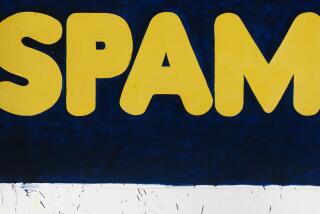COMMENTARY : Building Up Neutra After Tearing Him Down
Here’s an unusual way to celebrate the centennial of the birth of a creative genius: Get a wrecking ball and demolish one of his creations; then, open a joyful exhibition to praise him.
Odd, yes. But, it’s precisely the sequence of events at UCLA in its effort to mark the life of Richard Neutra (1892-1970), the Viennese-born, Los Angeles-based architect who ranks among the greatest International Style designers of the 20th Century.
Today, the university’s Wight Art Gallery opens “The Drawings of Richard Neutra: A Centennial Exhibition,” featuring one model and 139 renderings. A few weeks back, this notable event was preceded by the demolition of the only Neutra-designed structures on UCLA’s Westwood campus.
Three pavilions at the Corinne A. Seeds University Elementary School, commonly known as UES, were ignominiously sent to the architecture graveyard. When I say the school was destroyed, I don’t mean the entire UES complex was knocked down. It wasn’t. Most of the cluster of buildings remains. UCLA only tore down the architecturally significant part.
UES was initially designed in 1948 by Robert Alexander, a competent local architect who sited the school along Stone Canyon Creek, which parallels Sunset Boulevard. Nine years later, through the addition of a meandering row of free-standing classrooms, the elementary school was enlarged by the firm of Neutra and Alexander. Simple post-and-beam structures of concrete, stucco, wood, brick and glass, the string of new classrooms were linked by a covered walkway. This architectural “spine” followed the organic curve of the creek, while the portico and the glass walls of the classrooms opened onto tree-sheltered garden patios.
Neutra had garnered great acclaim in the 1930s and 1940s for his astonishing designs for private houses. In pursuit of the major public commissions that had eluded him, but which he believed would be the culmination of his career in the prosperous postwar years, he had formed a partnership with Alexander. Given the spatial transparency and organic penetration in the informal design of the UES pavilions, it’s easy to see which of the two partners was likely responsible for the addition.
Comparatively speaking, the UES design does not rank among Neutra’s greatest achievements; however, two things must be remembered. One is that a “merely good” Neutra building is infinitely superior to most of the built environment. The other is that architectural function, in concert with bricks and mortar, can be integral to a building’s larger cultural significance. Such is--or was--the case with UES.
The application of Neutra’s design principles to this particular school is among the more significant features of the now-vanished UES scheme. Founded in 1882, affiliated with UCLA in 1919 and moved onto campus in 1947, the experimental school operates as a teaching laboratory where new educational techniques and philosophies are tried out on its 450 students, ages 4 through 12. Operating independently of state education requirements and a local school board, UES is the only lab school left in California.
Once the breed had flourished. Rejecting authoritarian teaching methods, lab schools were developed by followers of John Dewey, the great American philosopher and educator who saw the marriage of vocation and culture as the function of education in a democratic society.
Neutra’s design for UES featured clear distinctions between the natural and the man-made, harmonious integration with the physical site and flexible open-planning. These and other aspects of the composition spoke of the same, decidedly modern moral commitment to social ideals that fueled the lab school philosophy. His eloquent design made visible a rich mix of American social, cultural and architectural history.
Why were Neutra’s pavilions demolished? It isn’t because of a change in UES philosophy. In fact, given the perilous state of American public education today, progressive lab schools are enjoying something of a renaissance across the country.
Instead, the site was cleared to make way for UCLA’s new graduate school of management, which will be housed in a $67-million behemoth of a building designed by New York architect Henry Cobb, and paid for by multimillion-dollar gifts from entrepreneur John E. Anderson, builder Eugene Rosenfeld, fast-food franchiser James Collins, the state of California and others. In a June, 1989, lecture outlining his plan, Cobb described the UCLA project as occupying the last undeveloped parcel of land on campus, and subsequently referred to three unidentified pavilions that would be “displaced.” The name of Richard Neutra was never spoken.
In 1958, one year after the addition to UES was built, the university’s art gallery mounted the first significant museum exhibition of Neutra’s work as an architect. Today, Neutra scholar and UCLA professor Thomas S. Hines, who co-organized the great 1982 Neutra retrospective at New York’s Museum of Modern Art and whose efforts to save the UES pavilions were thwarted by UCLA administrators, has organized the centennial exhibition of his drawings. (None of the renderings on view describe the UES pavilions.)
Whatever the considerable merits of that show, the architectural ruination of the University Elementary School amounts to little more than institutional vandalism. An inescapable feeling of nausea disrupts the birthday bash.
More to Read
The biggest entertainment stories
Get our big stories about Hollywood, film, television, music, arts, culture and more right in your inbox as soon as they publish.
You may occasionally receive promotional content from the Los Angeles Times.











